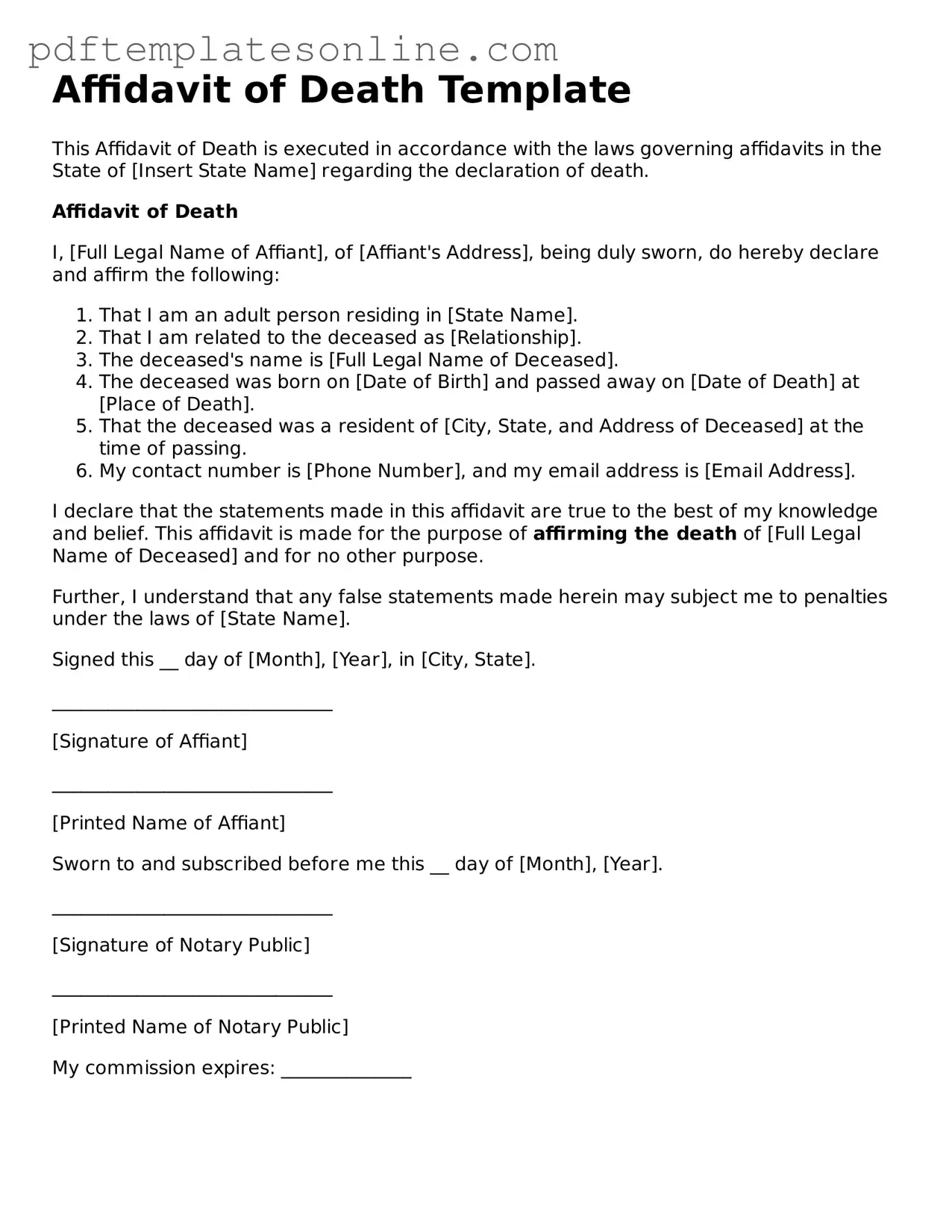Filling out the Affidavit of Death form can be a straightforward process, but several common mistakes can lead to complications. One frequent error occurs when individuals fail to provide accurate personal information about the deceased. It is essential to include the full name, date of birth, and date of death. Omitting or misspelling any of this information can create confusion and may delay the processing of the affidavit.
Another mistake is not signing the affidavit in the appropriate places. The form typically requires signatures from witnesses or the person completing the affidavit. If these signatures are missing or incorrectly placed, the document may not be considered valid. It is crucial to carefully review the signature requirements outlined in the instructions.
People often overlook the importance of including the correct date on the affidavit. The date of signing should match the date when the affidavit is executed. If the date is incorrect or missing, it can lead to questions about the affidavit's legitimacy, potentially complicating legal proceedings.
Additionally, failing to provide supporting documentation can be a significant oversight. Many jurisdictions require a death certificate or other official documents to accompany the affidavit. Without these documents, the affidavit may be rejected or deemed incomplete, leading to delays in settling the deceased's affairs.
Another common error involves misunderstanding the jurisdictional requirements. Each state may have different rules regarding the Affidavit of Death. Individuals should ensure they are following the correct procedures for their state to avoid unnecessary complications.
Lastly, people sometimes neglect to keep copies of the completed affidavit. Having a personal copy can be invaluable for future reference or if any issues arise. It is always wise to maintain records of important legal documents to ensure that all parties involved have access to the necessary information.
